The 20 Best Acne Spot Treatments to Shrink Pimples, Stat
Smaller zits in 24 hours? Count us in.
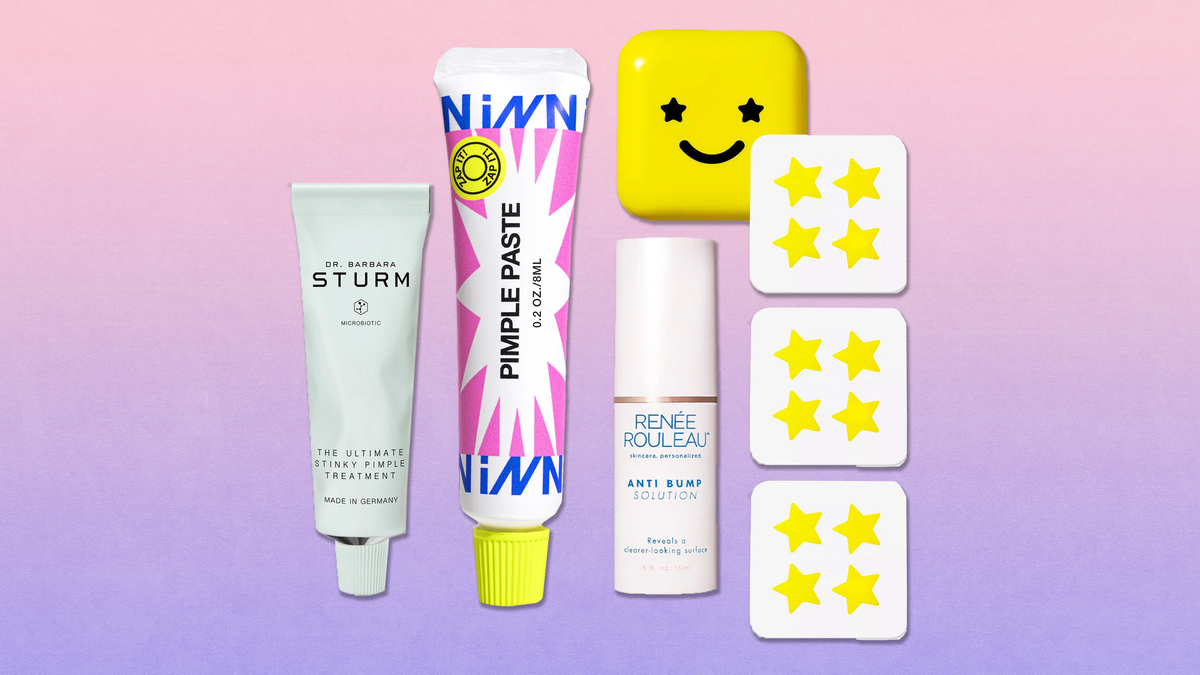

When an uninvited guest (read: pimple) decides to pop up, it’s easy to go straight into panic mode. But instead of picking, popping, and causing even more inflammation, your first instinct should be to reach for one of the best acne spot treatments. Because the truth is: A drying lotion, pimple patch, or other acne spot treatment is going to be the quickest, most effective, and least irritating method to shrink your unwanted zit. “Acne spot treatments often contain ingredients that expedite wound healing and dry up any oozing, which improves skin quickly and certainly speeds up the pimple process,” says Dr. Rachel Nazarian, board-certified dermatologist at Schweiger Dermatology Group in New York City.
Giving a targeted dose of salicylic acid or benzoyl peroxide to your little friend can make it look a whole lot smaller in just 24 to 48 hours. As for *exactly* which product you’ll want to use to get the pimple-shrinking job done? A lot of it boils down to personal preference and skin type. There are superpowered drying gels great for pus-y pimples (lookin’ at you Mario Badescu), invisible patches for a daytime treatment, and gentle pastes formulated specifically for those with sensitive skin. Here, we’ve rounded up the best acne spot treatments of all time—and answered every question you could possibly have about using ‘em.
How Does a Spot Treatment Work?
“Acne spot treatments work by delivering direct levels of anti-inflammatory ingredients to quickly decrease the redness and swelling associated with pimples,” explains Dr. Nazarian. Because a spot treatment is typically occlusive, a.k.a. it forms a protective barrier on the outside of your pimple, it’s able to “enhance the delivery of topical ingredients and stimulate healing.”
But let’s lay some ground rules: An acne spot treatment isn’t the best course of action for someone with acneic skin. If that’s the case, you’ll want to work with a dermatologist and adopt a skincare routine for acne-prone skin. That said, a spot treatment is one of the most effective ways to treat a particularly angry or unexpected pimple.
What Should I Look for in a Spot Treatment?
- Active Ingredients
Every spot treatment on our list is a winner—but selecting the right one for your specific skin type and concerns boils down to the ingredient list. Dr. Nazarian explains that benzoyl peroxide is “wonderful for killing bacteria that can lead to pimples” and is ideal for deeper, red zits. Salicylic acid, on the other hand, is preferable for treating blackheads and whiteheads. Dr. Rabach adds that ingredients like sulfur and zinc are particularly calming and anti-inflammatory, while a spot treatment with lactic or kojic acid (both have exfoliating properties) will be beneficial to anyone dealing with hyperpigmentation.
- Supplemental Ingredients
The active ingredient will be the star of the show, but it's worthwhile to give a good look at the other ingredients that made their way into the formula. If you have sensitive skin, make sure to seek out a product with soothing ingredients like aloe vera or niacinamide. This will help keep the skin balanced—not peeling, dry, or flaky.
- Texture
This is really all personal preference. You can pick from spot treatments that come in the form of hydrocolloid patches, creams, gels, or even drying pigments.
The Best Acne Spot Treatments
- The Best Spot Treatment for Blackheads: Dr. Barbara Sturm The Ultimate Stinky Pimple Treatment
- The Best Spot Treatment for Whiteheads: First Aid Beauty Pharma BHA Acne Spot Treatment Gel
- The Best Spot Treatment for Cysts: Renee Rouleau Anti Bump Solution
- The Best Pimple Patch Spot Treatment: Starface Hydro-Stars
- The Best Spot Treatment for Sensitive Skin: EVE LOM Dynaspot Treatment
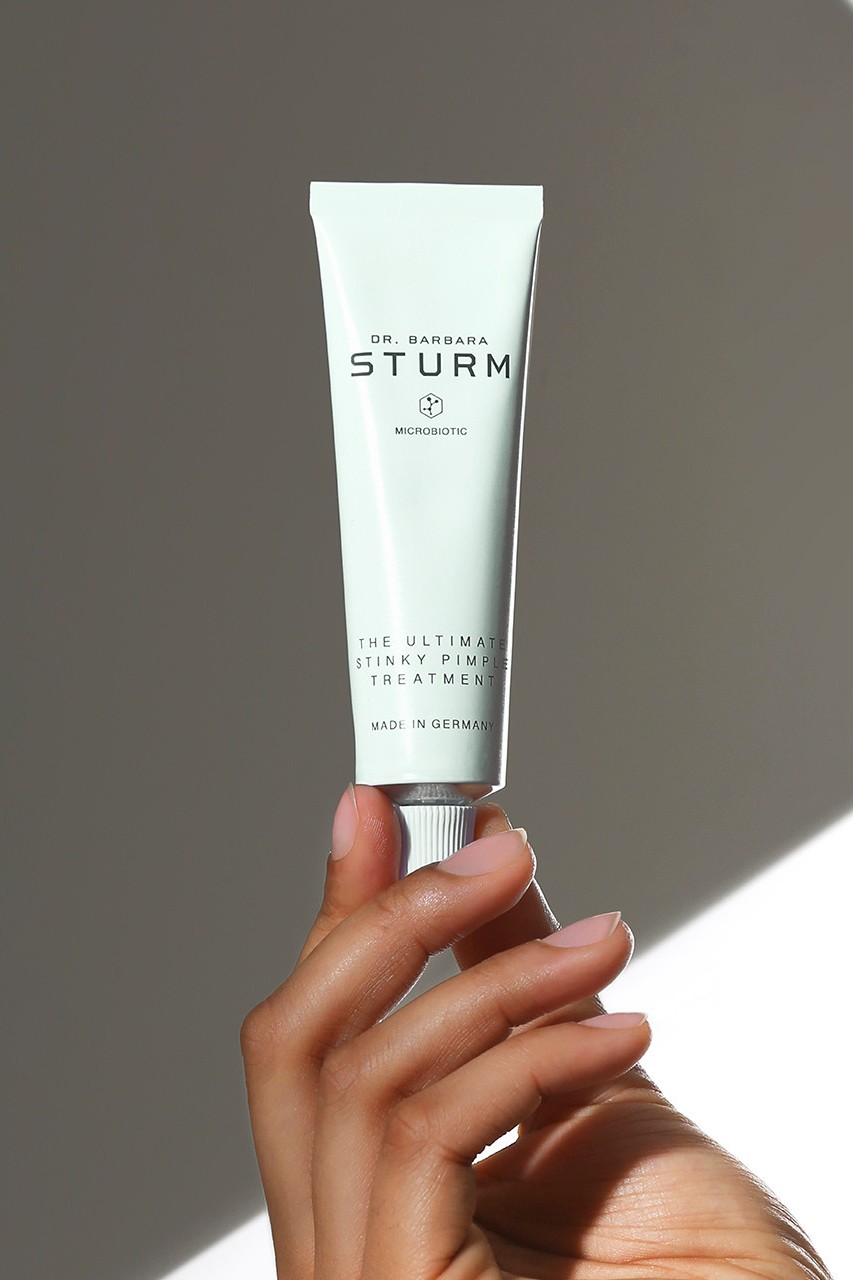
Don’t say we didn’t warn you—this cream smells like rotten eggs. But the same shale oil that gives it its stink is also responsible for its sebum-regulating powers. This ointment can be dabbed on a blemish before bed, or layered on thick to a particularly nasty cyst. But, if your skin is generally acting up, consider sleeping with a layer all-over for a little reset. As luck would have it, this can also be preventative in nature. Just consider lighting a candle to compensate for the stink.
Pros: Controls oil; Good for blackheads; Can be worn under makeup
Cons: Smelly
Customer Review: "I have never used a pimple treatment that is so effective and yet so gentle. I saw a drastic reduction in the redness and size of breakouts overnight, with some smaller blemishes disappearing completely. All of my breaks were significantly less inflamed and it didn’t make the areas dry or crusty like some pimple treatments." — Dr. Sturm
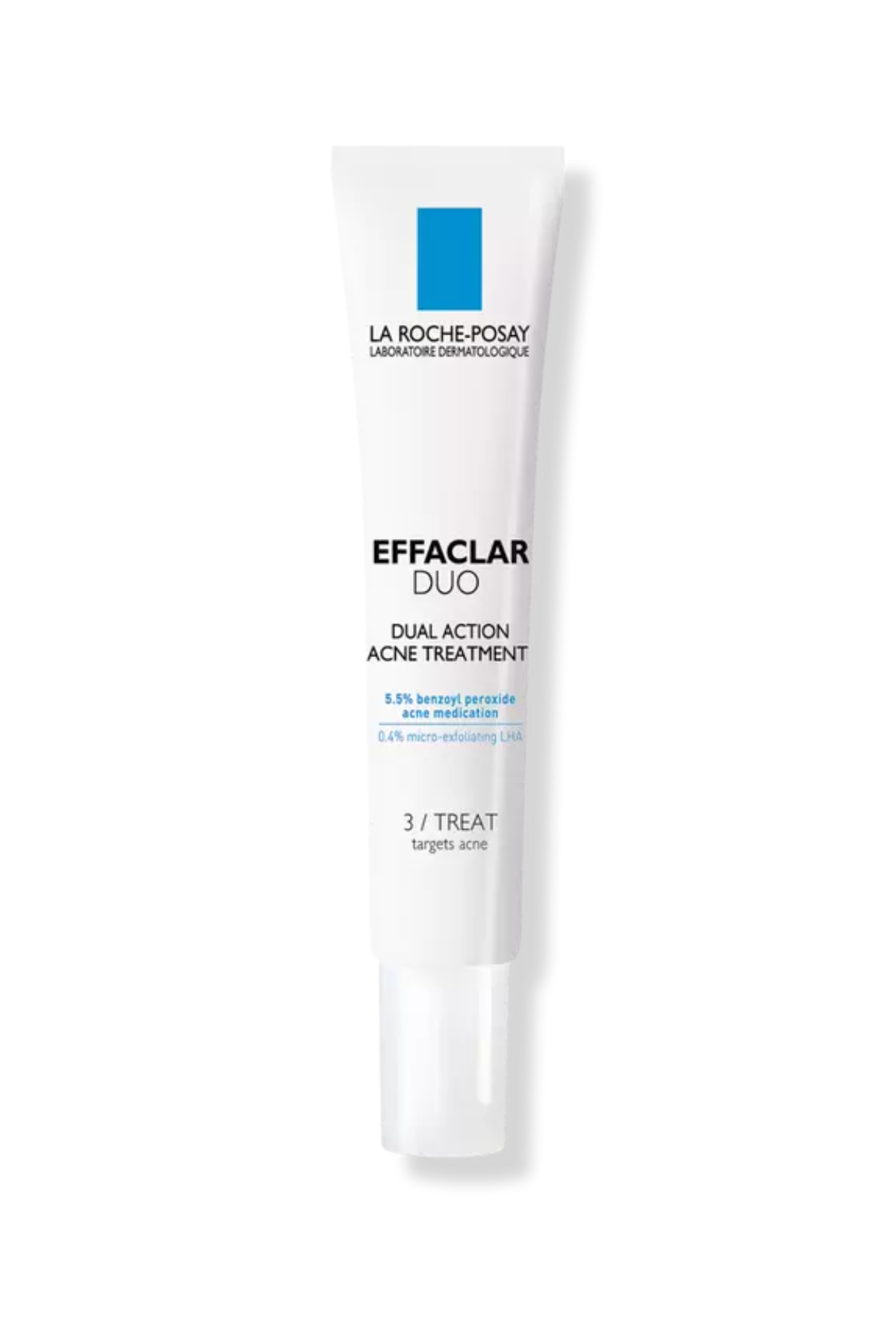
There is so much to love about this La Roche-Posay staple. Not only is the dermatologist-formulated treatment top-notch when it comes to efficacy, but it’s also multi-purpose in its use. If you’re struggling with breakouts all over, you can apply a thin layer to your complexion—without running the risk of burning your face off. If you just have one pimple to contend with? Use the formula as a spot treatment. This benzoyl peroxide product will get to work ASAP.
Pros: Affordable; Effective; Derm-approved
Cons: Bleaches fabric
Customer Review: "My dermatologist recommended this product and said it was better than anything he could prescribe me. I had found myself overcome with severe adult acne after moving across the state. This cleared my skin up with only a few white head and no new break outs within a week." — Ulta
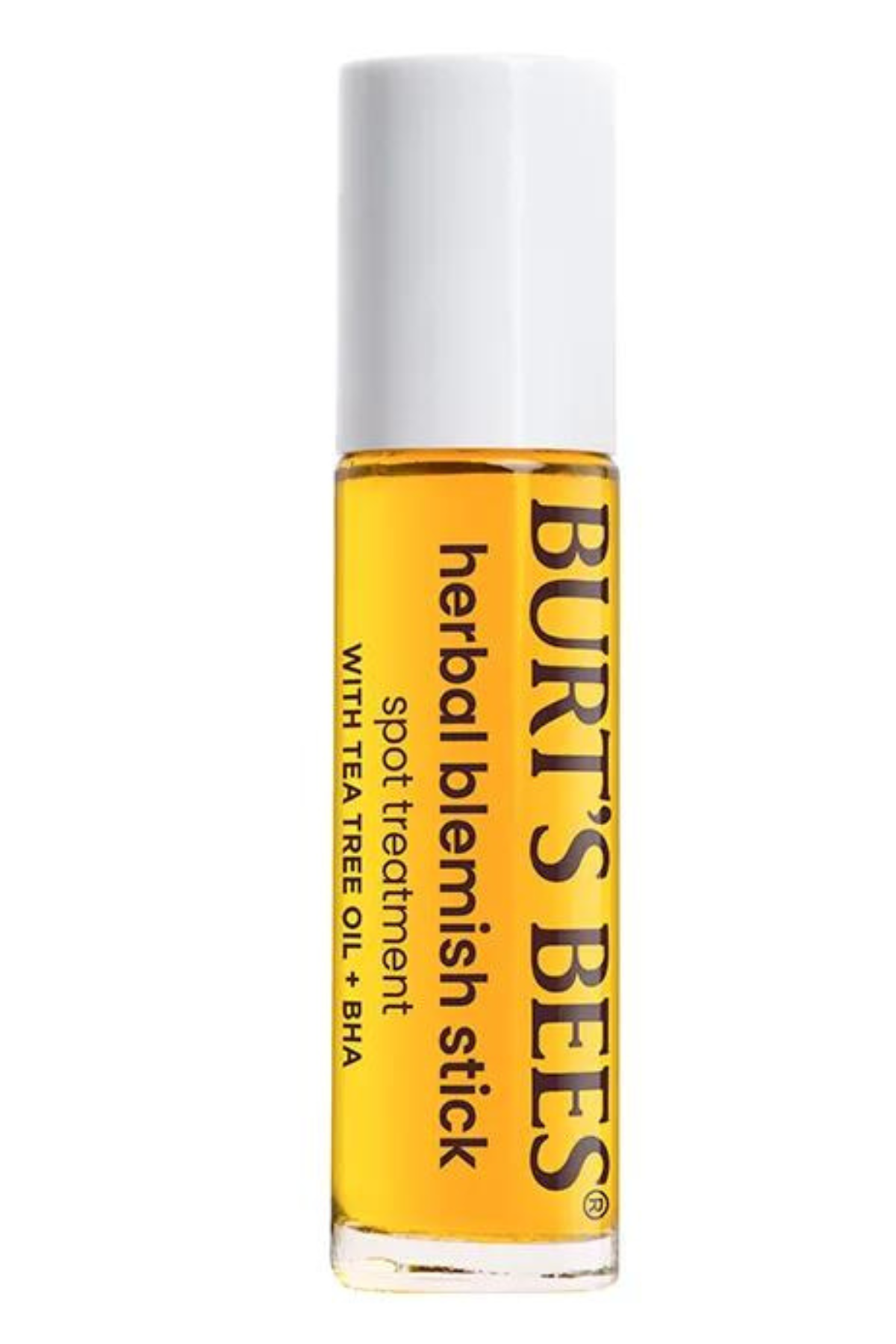
Sometimes the best products are the simplest. Take Burt’s Bees for instance. With naturally derived tea tree oil and salicylic acid extracted from willow bark, this little roller ball spot treatment will help unclog pores, shrink pimples, and create a clearer complexion. I personally like to keep one of these in every bag so I can treat my breakouts on the go. And trust me: You’ll notice a huge difference in the angriness of your pimples in just about 24 hours.
Pros: Easy to travel with; Natural ingredients
Cons: Roller ball gets dirty
Customer Review: "I recently redid my skincare routine to replace everything with all-natural ingredients and I'm so glad I did. After years and years of using the heavy, chemical laden products to try and get rid of my acne and feeling like I was hurting my skin in the process this is the perfect alternative." — Burt's Bees
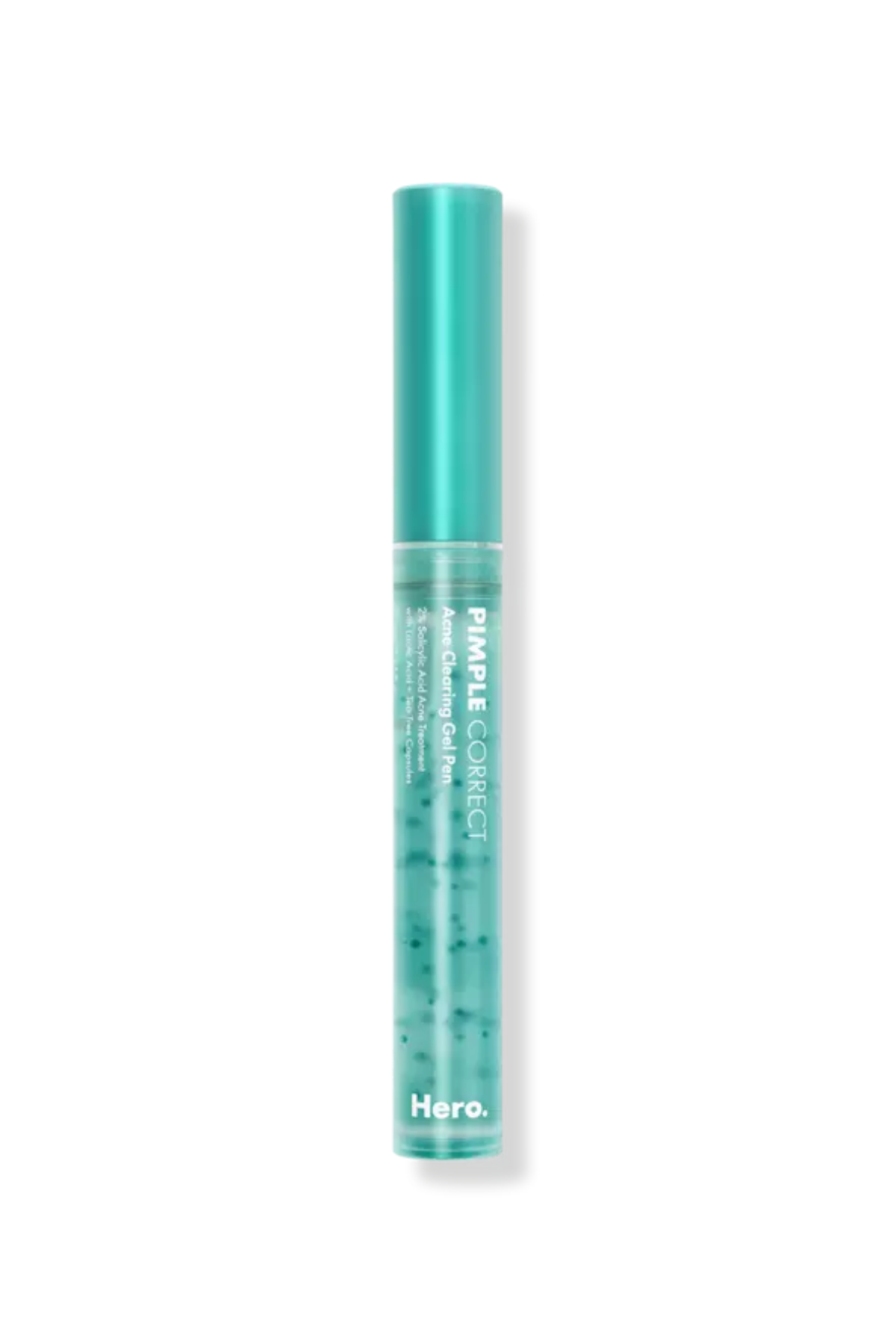
The goal is for a spot treatment to dry out your spot—not the surrounding skin. That’s what makes this targeting applicator so special. The gel goes exactly where you want it to, so the active ingredients are able to dry the heck out of your blemish without irritating the rest of your complexion. What are said actives, you ask? There’s a blend of salicylic acid, azelaic acid, and tea tree oil, which join together to reduce inflammation and bacteria.
Pros: Targeted; Great actives
Cons: Hard to get product out
Customer Review: "This is such a convenient and easy to use on the go or at home spot treatment. It's mess free, quick, and very effective. I consistently get lots of those tedious little guys that are red and sore the second they appear. This Acne Pen does just the trick! It immediately soothes the irritable inflammation, reduces swelling, basically just calming the irate pimple down." —Ulta
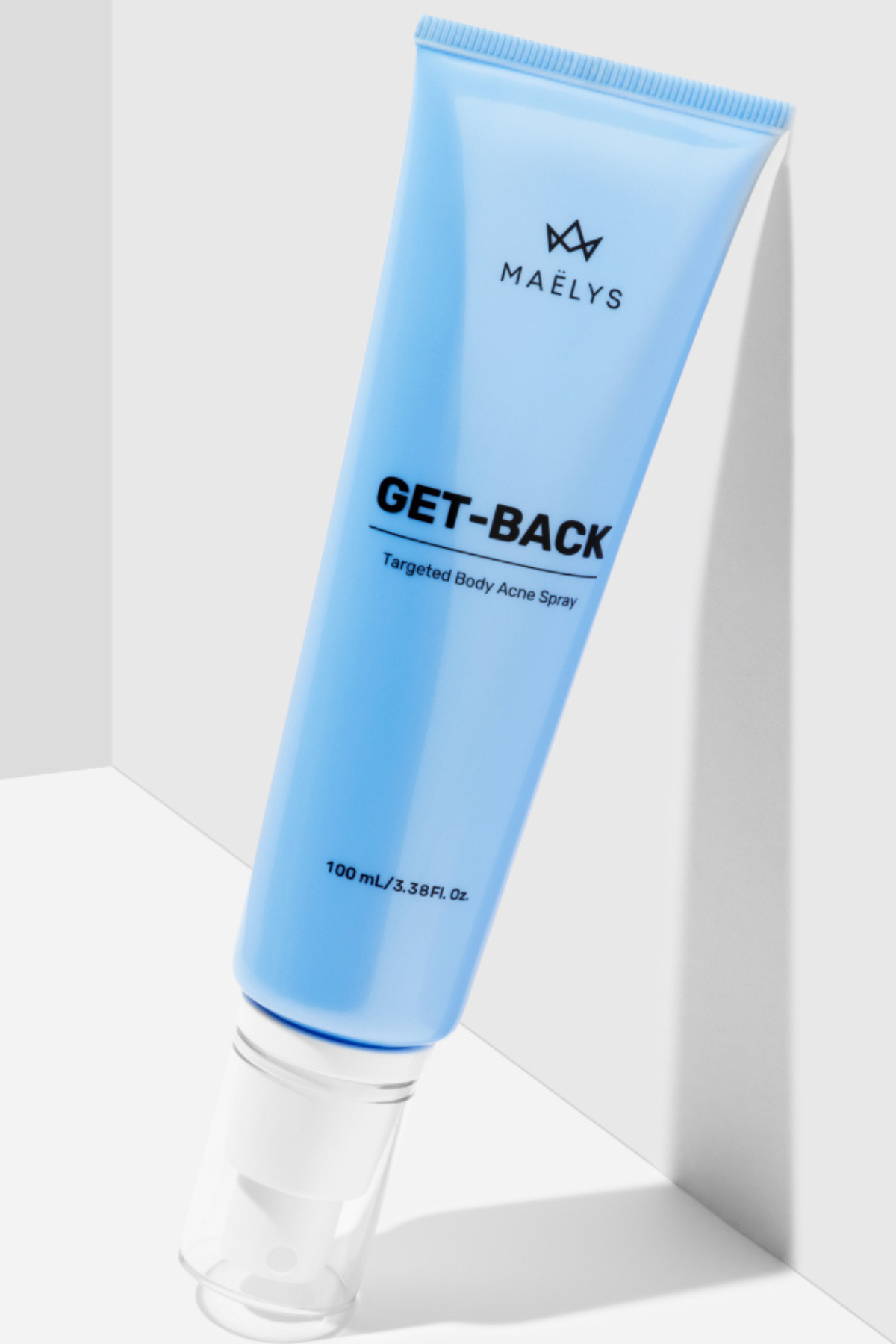
We’ve all been there. You have a nasty cyst or a cluster of little friends that decided to pop up on your back. It doesn’t quite call for an acne body wash because the affected area is teeny-tiny, but it’s near impossible to get a traditional spot treatment where it needs to be. Enter: MAELYS body spray, which was specifically designed to spritz a salicylic acid-packed formula onto hard-to-reach spaces. Just spritz onto dry skin twice a day and you should notice improvement relatively quickly.
Pros: Good for body; Contains salicylic acid
Cons: Might feel a little sticky at first
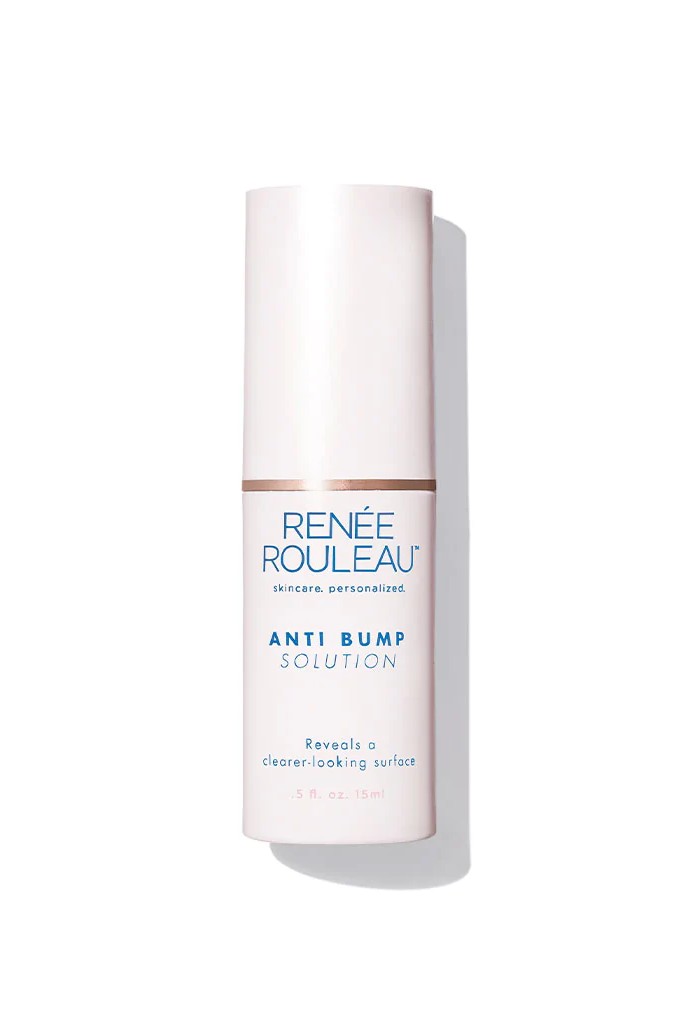
While most spot treatments aren’t going to do a whole lot for cystic acne, this particular product has developed a bit of a cult-following for its ability to calm down blind pimples. With lactic acid, citric acid, and a moisturizing agent called methyl gluceth, this slightly smelly gel directly targets inflammation in the skin. “I get these deep underground zits and this is a miracle worker,” one customer wrote in a review. “I even use it as a serum all over my face and chest to keep everything clear.”
Pros: Works for cysts; Hydrating; Anti-inflammatory
Cons: Only works for cystic acne; Results may take time
Customer Review: "After just the first use I could see my acne redness decrease. I had a spot of cystic acne and after one week of using this during the day and switching between this and BHA Clarifying serum at night it’s completely gone. This product also goes on great under my makeup providing me a little barrier between my skin and makeup" — Renee Rouleau
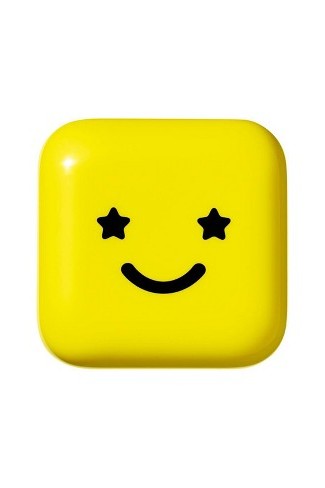
If you’re aiming for a daytime treatment, pimple patches are the way to go. These stars look cute (we’re obsessed!) and are extremely effective. They use hydrocolloids to soak up the fluid in your pimple, which in turn, makes it shrink up and shrivel over time. As an added bonus, they serve as a reminder to keep your bacteria-filled hands off your pimple. Picking only leads to scarring, ladies and gents.
Pros: Refillable case; Cute packaging; Hydrocolloid-based
Cons: Not invisible; May be drying
Customer Review: "Packaging is so cute and compact, your stickies will never fall out!! And omg the quality is amazing! I sleep with them on and they NEVER fall off." — Starface
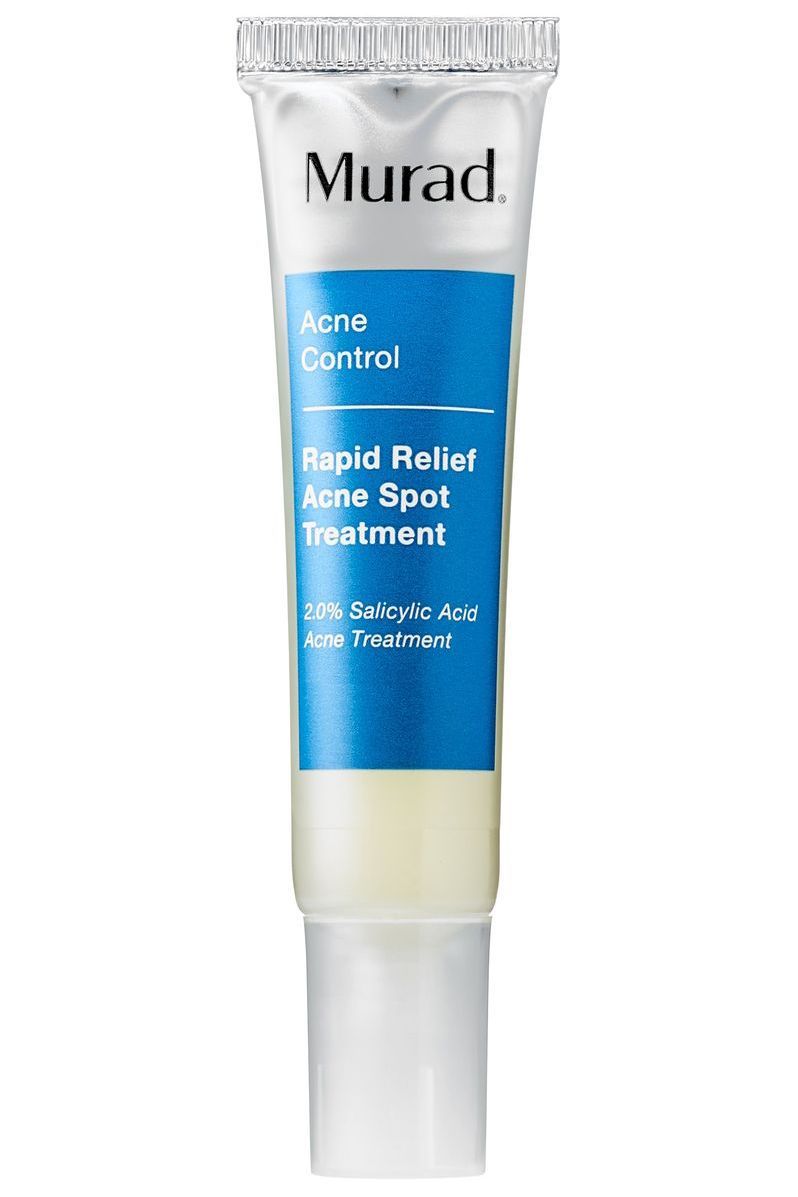
The OG spot treatment that still reigns supreme. Formulated with salicylic acid, witch hazel, and oat extract, this best-seller rapidly unclogs pores to erase existing breakouts and prevent emerging pimples from surfacing. That in mind, make sure to follow up with a moisturizer as the main ingredients can be a bit drying—especially with dehydrated or dry skin types. Chances are, you'll notice a difference after just one night, but don't toss it to the side if it doesn't work at lightning speed. Treating breakouts takes time.
Pros: Fast-acting; Evens tone
Cons: Drying
Customer Review: "Bought this on impulse because I'd never had a spot treatment work well before and I'd heard good things about Murad. I honestly expected very little but it works!!! My acne had calmed down by morning and this has definitely helped to calm it & get rid of it much faster than it would on its own. It's not magic or anything - your acne will not disappear by morning, but there is definitely a noticeable difference which I find impressive." — Sephora
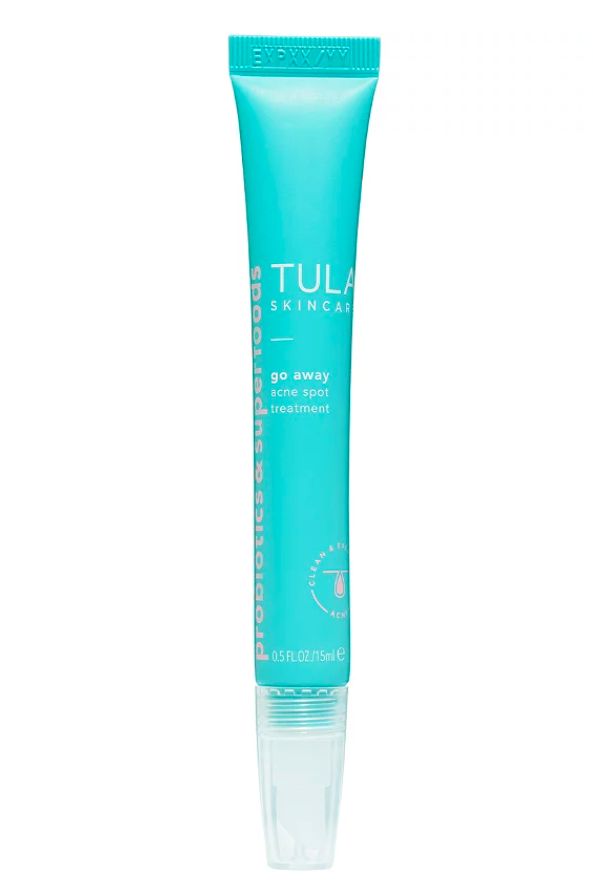
There's nothing more annoying than noticing a dark spot post-pimple. Thanks to licorice, azelaic acid, and niacinamide, this targeted treatment is a beast at calming down inflammation and simultaneously fading hyperpigmentation. The soothing ingredients are then balanced out by the inclusion of benzoyl peroxide, one of the best acne-fighting ingredients. With regular use (use as a spot treatment or apply as a thin layer), you'll have no sign of a breakout.
Pros: Fights hyperpigmentation; Prevents breakouts
Cons: Might cause redness or dryness
Customer Review: "I battled unknown and probably hormonal acne for 2 years, only topical antibiotics helped. Once clear, I became pregnant and my face broke out again in my first trimester. This Tula product to the rescue!!! I use this morning and night after I cleanse and apply hyaluronic acid. I have dry sensitive skin, and this does NOT dry my skin out, make it patchy, or itchy." — Ulta
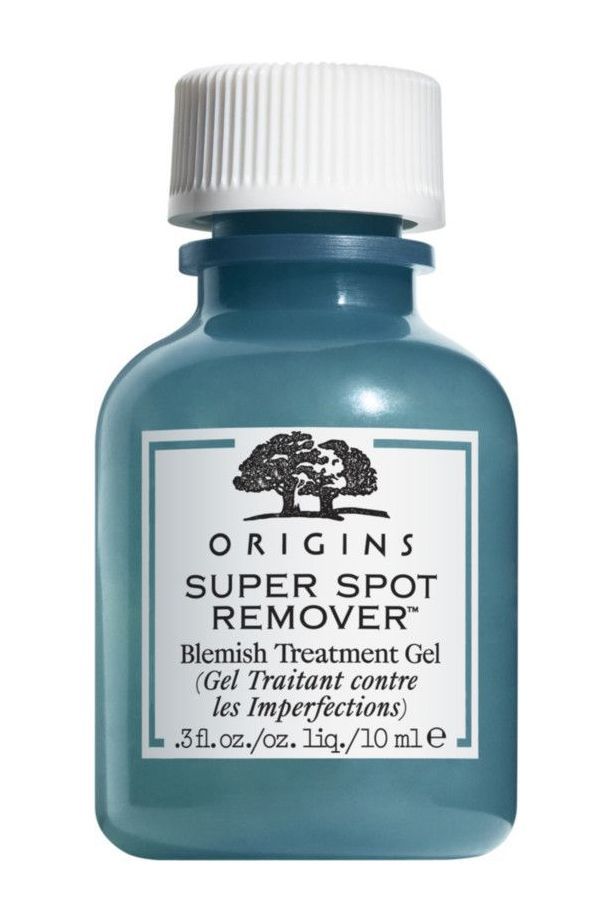
This treatment tingles, but don't be alarmed—it shouldn't trigger irritation thanks to the soothing effects of cucumber extract and red algae, which reduce redness. That in mind, it's always a little touch and go with dry and sensitive skin types. If you do develop redness or dryness, try scaling down your frequency of application from three times a day to one time a day. You'll notice breakouts disappear within two to three days, with no lingering signs of scarring. This is a great option for anyone with sensitive or easily irritated skin.
Pros: Effective; Shrinks pores
Cons: May cause irritation
Customer Review: "I have hormonal acne and sensitive skin, and nothing really works to help calm and clear breakouts. This product is MAGIC. It is the only product I've found that will help clear up pimples in just a few days and can help prevent upcoming breakouts from getting worse. It does have a strong smell but does not irritate my skin at all. If you're on the fence, buy it!! A little bit goes a long way." — Ulta
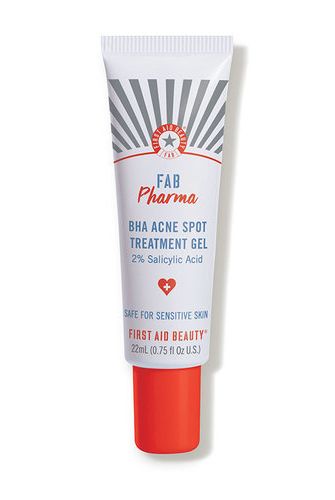
Your whiteheads and blackheads will be a thing of the past with this high-powered, yet gentle spot treatment. Salicylic and glycolic acids, papaya, and willow bark extract team up to unclog congested pores and quickly resurface the skin to reveal bright and glowing skin. It layers up to three times per day—it's in our night and morning regimen. The biggest plus, however, is that it was designed specifically with sensitive skin in mind. It's one of the least drying and irritating options out there.
Pros: Good for sensitive skin; Boosts glow
Cons: Not great for larger pimples or cysts
Customer Review: "This is my new go-to spot treatment! In the past I've noticed spot treatments tend to burn at least a little bit and would take several applications to work. I noticed clearer skin immediately with this treatment, and had absolutely no issue with stinging or burning. It also applies quite thinly, so a little bit can go a long way." — Sephora
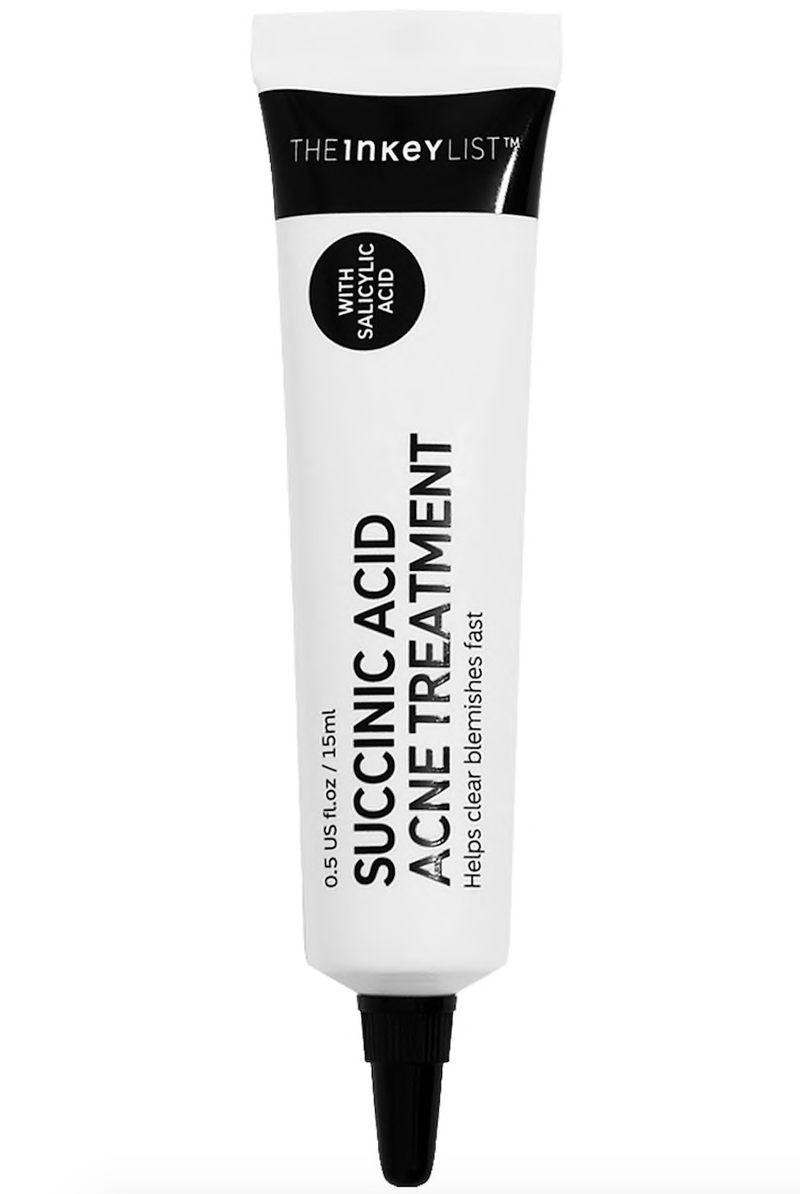
Here's a gentle spot treatment that uses succinic acid to quickly shrink pimples and absorb excess sebum. In addition, salicylic acid and sulfur work to exfoliate and prevent new blemishes from popping up. A major plus with this specific product is that it layers flawlessly under makeup—you won't experience any flaking or crustiness. That said, the formula does have a slight tint to it, so make sure you rub it in thoroughly to avoid a shadow.
Pros: Gentle on the skin; Great for blackheads
Cons: Smelly; Doesn't flake
Customer Review: "I’ve been using this for a few months & I love it! I’ve noticed this helps to get rid of acne a lot faster than any other productive used. It’s gentle & effective. My skin hasn’t been this clear in a long time." — Sephora
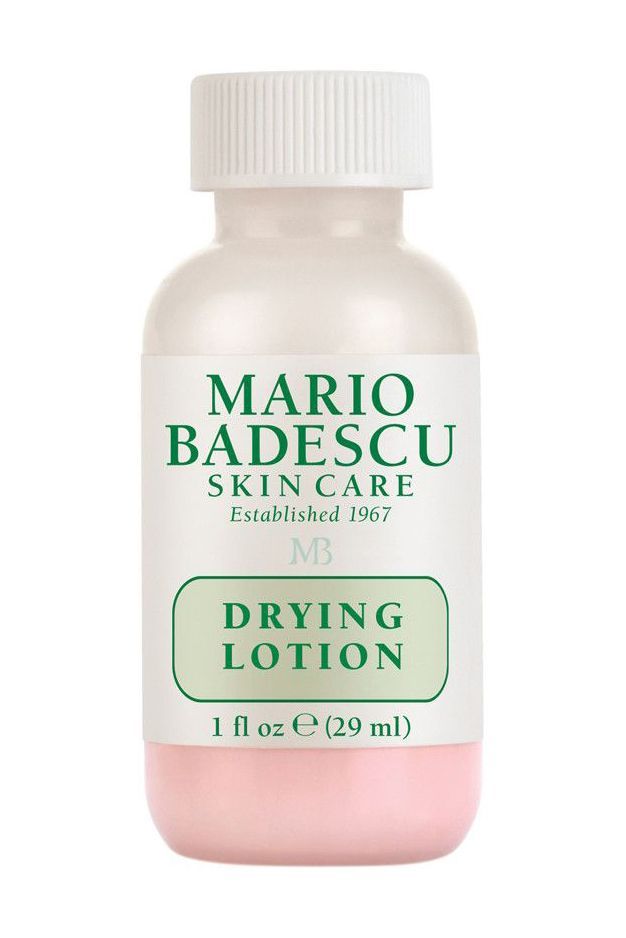
This drying lotion is a triple threat for banishing breakouts. It's comprised of salicylic acid to unclog pores, sulfur to kill bacteria, and calamine to calm inflammation. While it goes on a bit intense, many have witnessed its blemish-erasing results after just one night of use. It's ideal for those juicy pimples with a lot of pus. The formula separates while it's chilling on your vanity so give it a shake before dipping a Q-tip into the base of the formula.
Pros: Works quickly; Ideal for targeted treatment
Cons: Drying
Customer Review: "This stuff works great when a pimple pops up!! At night I just put a little bit on one and by the next morning it's already way less red and angry, it's really the only stuff that actually works in not a lot of time which is amazing. It does make you a little dry if you use it multiple days in a row so be careful with that."
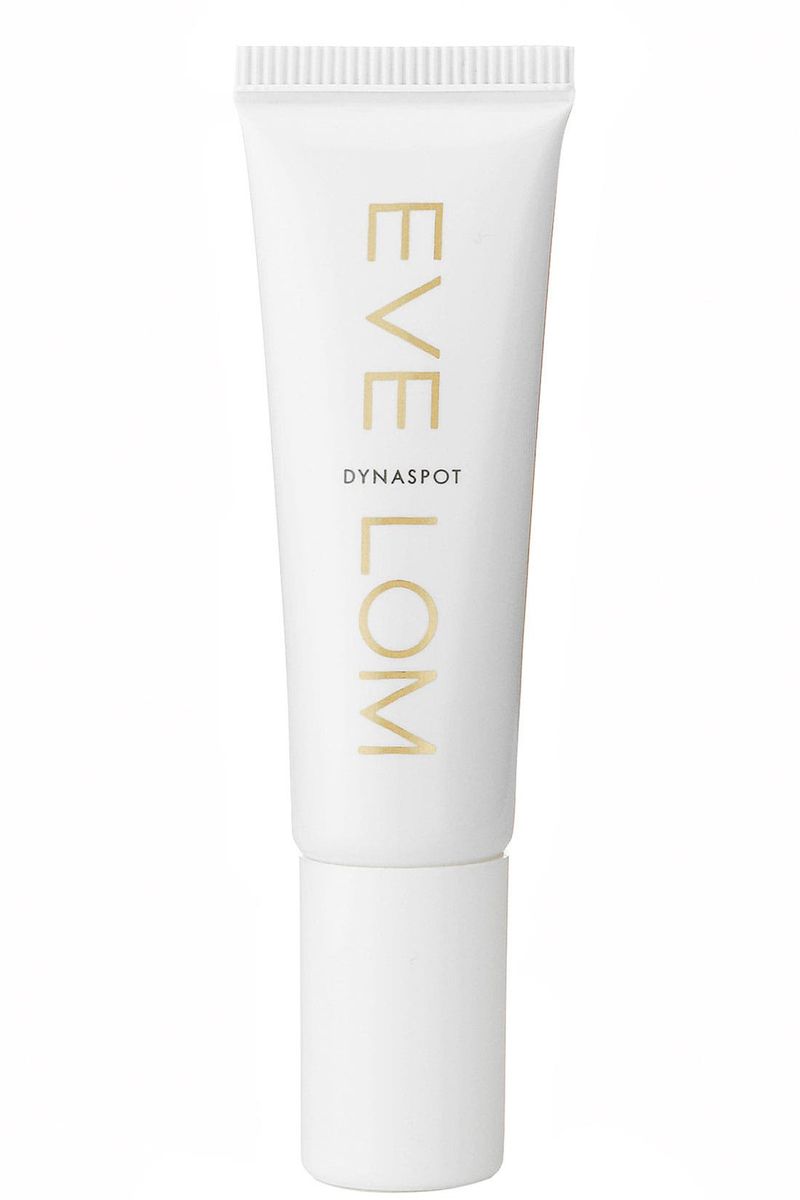
This spot is formulated with tea tree oil and salicylic acid to quickly clear blemishes, plus soothing botanicals like chamomile and fennel to calm irritation. It's designed to be worn over or under makeup. While that's certainly an option, there can be a bit of flaking as the treatment dries down so make sure you buff away the excess product before going in with foundation. It's also worth mentioning that this is tinted.
Pros: Great for sensitive skin; Calms irritation
Cons: Flakes
Customer Review: "Both my husband and I are hooked on Dynaspot! It makes blackheads and whiteheads and even those deeper under-the-skin cystic-type spots disappear in no time!" — Bloomingdales
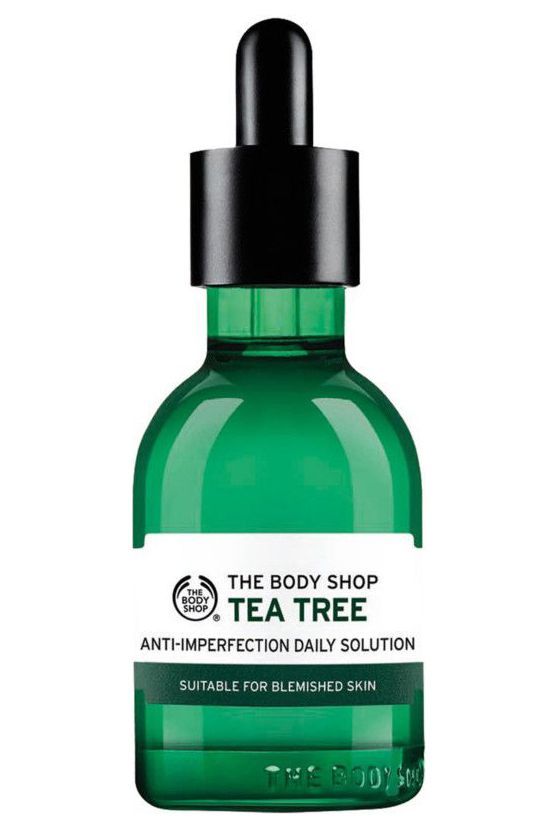
FYI: Tea tree oil is a natural antiseptic that does amazing things when applied to a blemish. This lightweight serum penetrates deep into the pores to extract impurities and ward off bacteria from forming. The result is a fresh and renewed glowing appearance. Because this is a serum, it's not necessarily the best bet if you want a targeted spot treatment. We recommend this for people who have more acneic skin or are looking for a preventative skincare product.
Pros: Balancing; Non-Greasy
Cons: Irritating; Messy to apply
Customer Review: "Love this stuff. I use it every day and night. Helps heal blemishes quickly, reduces oil, reduces redness, and I think it also prevents new blemishes from forming. This is my third bottle. So glad I found it." — Ulta
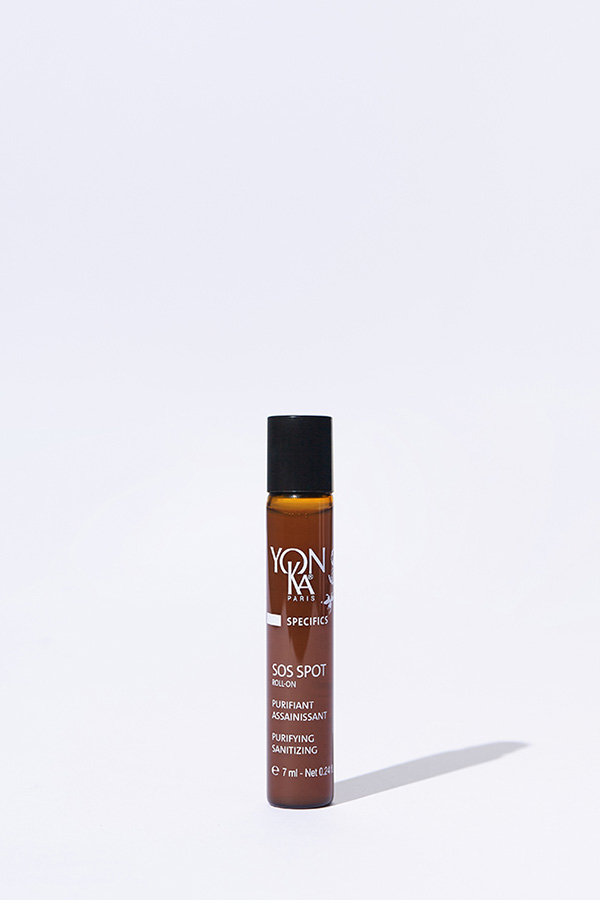
Do away with mild breakouts in no time with this acne-fighting gem. The fast-acting treatment (seriously it works overnight) is powered by sulfur, which works to reduce excess sebum, kill bacteria, and balance the skin. Because the formula is balanced with calming essential oils and soothing calendula, it won't dry out your skin either. And added bonus? The roller bar makes targeted treatment easy as can be.
Pros: Soothing; Fast acting; Works on all types of acne
Cons: Slight smell from the sulfur
Customer Review: "Definitely reduced a cystic acne lesion by at least 50% after two days, and completely eliminated redness within one day! One star off due to roller and size. Yon-ka products are a luxury for me, so I naturally wish it was a little more affordable." — Yonka Paris
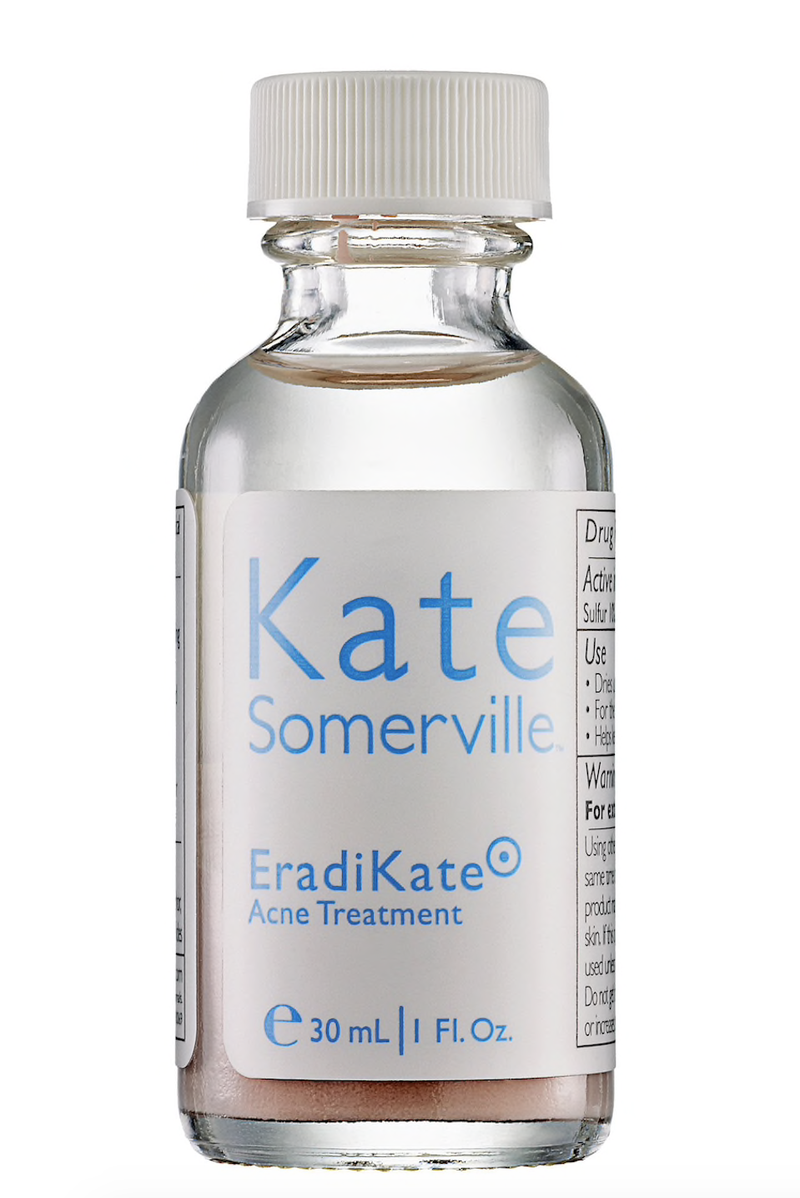
This pink solution contains 10 percent sulfur to effectively clear out pimples without drying out the skin or causing more irritation. Simply dip a Q-Tip into the solution and tap it on to the area in question. Prepare to witness results in as little as one hour. While it is one of our favorites, we want to point out that it's not recommended for sensitive skin or those who are allergic to sulfur.
Pros: Fast-acting; Prevents future breakouts
Cons: Slightly smelly; Drying; Bad for sensitive skin
Customer Review: "I love this product. EradiKate is a great quick-fix that I apply anytime a zit sneaks up on me. I see a near immediate reduction in redness and inflammation blemishes after use. I have combination skin with dry/sensitive cheeks and balanced skin on my t-zone." — Ulta
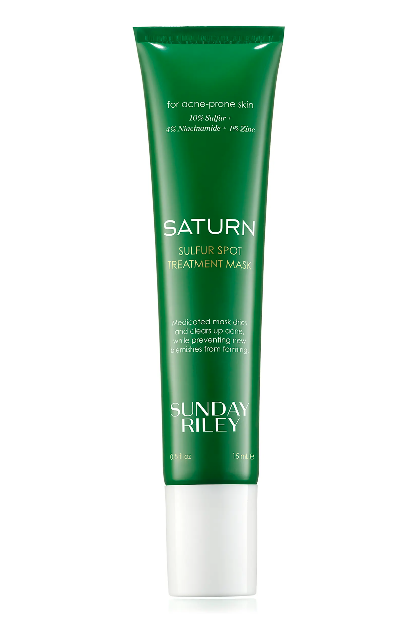
Thanks to the combination of sulfur, zinc, bentonite, and niacinamide, those annoying pimples and clogs don't stand a chance against this skincare hero. The fast-acting treatment zaps away zits and prevents new ones from forming, all while minimizing the appearance of pores. This product gets five stars for its versatility—it addresses casual whiteheads and the nasty, deep hormonal cysts. Plus, it's been formulated with rosacea patients in mind—a rarity on the acne front.
Pros: Shrinks pores; Safe for rosacea patients
Cons: Small bottle
Customer Review: "I’ve tried so many pimple creams and this is the best one, in my book. My skin doesn’t respond well to SA and I don’t like using BP but sulfur is 10/10. I’m a redhead with very sensitive skin and this stuff is my go to. It doesn’t smell or burn my skin. Would recommend." —Dermstore
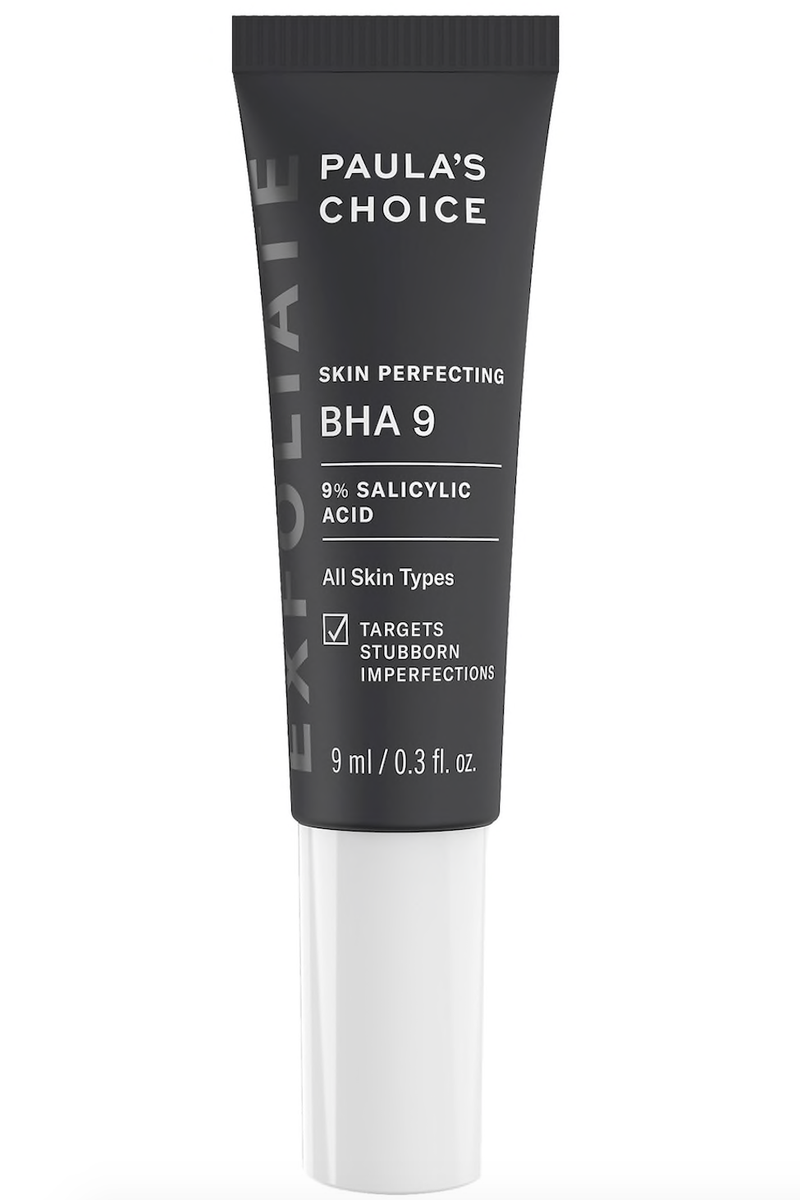
Trust us when we say that this skin perfector will rapidly reduce the most stubborn pimples. This treatment is loaded with nine percent salicylic acid to draw out imperfections. While on the one hand that means it's going to do a damn good job at fighting acne and smoothing out rough patches and uneven texture, it also means it might be a smidge too drying for sensitive, dry skin types.
Pros: Evens out texture; Helps clean out pores
Cons: Pricy; Not good for dry or sensitive skin
Customer Review: "I am amazed by this tiny treatment! It's a very watery liquid with no scent. It absorbs very fast to the skin just like water. Not sticky at all. My boyfriend's face has a lot of big pores and scars from acne and dehydration. So I apply it on his face day and night. After just one day, I can clearly see the pore and scare become less obvious, less deep, and smoother!" — Sephora
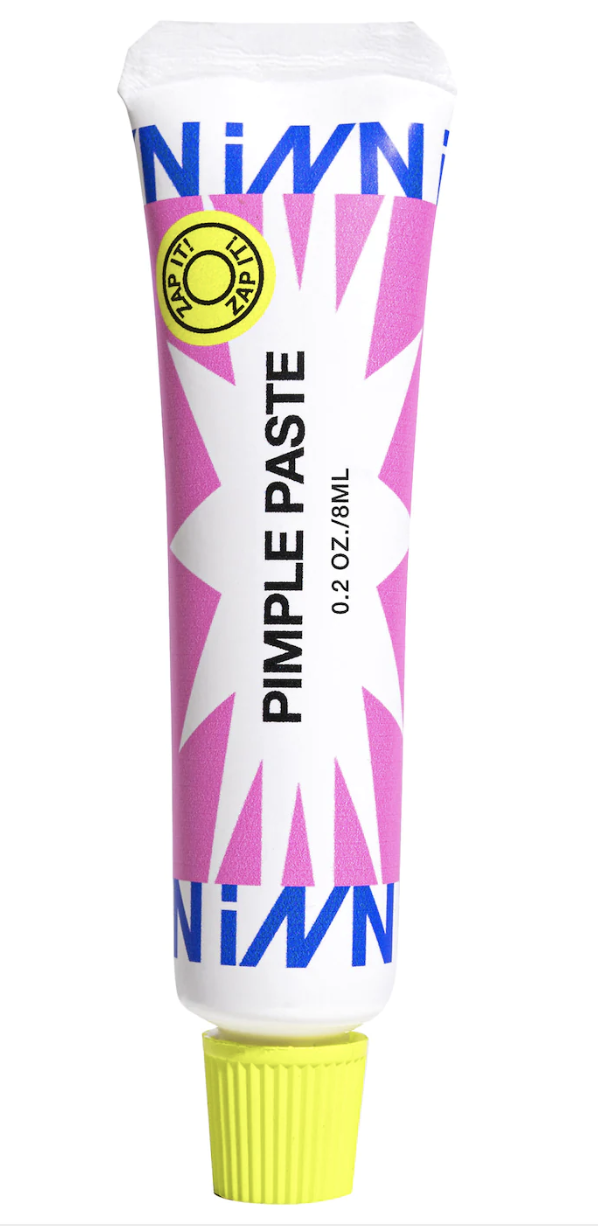
First off: It's a myth that straight up toothpaste can shrink your pimple. However, this toothpaste-inspired treatment will work wonders on acne. The overnight treatment is packed with a wide array of exfoliating and calming ingredients, ranging from clay and sulfur to azelaic acid and willow bark. The grey clay adheres to skin to reduce sebum, target blemishes, and get rid of redness. This formula does flake so make sure to add a nice layer and wash it off in the morning with your favorite gentle cleanser.
Pros: Great packaging, Non-drying
Cons: Flakes; Transfers
Customer Review: "This shrunk my cystic acne so much. I woke up with a much less noticeable bump. If you have dry skin, I wouldn’t recommend—it burns so badly when you put it on, but it calms down after a few minutes overall." — Sephora
When Do I Use a Spot Treatment?
Adding a spot treatment into your skincare is easy as can be—most can be used in the morning or night and should be applied directly after your moisturizer. “You can combine spot treatments with the rest of your regiment, especially with non-irritating products like hyaluronic acid,” says Dr. Nazarian. While combining spot treatments with hydrating and calming products is a plus, Dr. Rabach does suggest thinking twice before combining a spot treatment with other acids or retinols, as it can be overly drying—especially for those with dry or sensitive skin.
While sunscreen should always be the final step in your morning skincare routine, wearing SPF is even more important if you’re using a spot treatment. “Ingredients in spot treatments can increase sun sensitivity and hyperpigmentation,” explains Dr. Rabach. She recommends looking for a physical formula with titanium dioxide or zinc as the active ingredient. (We also hand-picked our favorite sunscreens for acne-prone skin.)
Is a Spot Treatment Good for All Types of Pimples?
A spot treatment is going to work best on two types of pimples: inflamed papules and pustules that need to be calmed down or dried up. When it comes to blackheads, Dr. Nazarian explains that spot treatments will be effective—but it’s going to take a lot longer to see results. “An acne leave-on cream works just as good if not better for blackheads,” she says. As for cystic acne, aka those under-the-skin pimples? “Spot treatments don’t really help the ones you feel, but can’t see because they’re too deep for the medicine to really get there and break up the pimple,” adds Dr. Morgan Rabach, board-certified dermatologist and co-founder of L.M. Medical in New York City. If your cyst pimple is particularly painful, visit your board-certified dermatologist for a cortisone injection.
Meet the Dermatologists

Dr. Morgan Rabach is a board-certified Dermatologist and media expert with hundreds of opinion articles on skincare and the use of injectable cosmetic procedures. Dr. Morgan is known for her expertise in cutting edge techniques for Botox and Fillers and the savy use of skin products. Additionally, she deeply enjoys helping people eliminate acne scarring. Dr. Morgan is ranked “#1 dermatologist” in NYC by RateMDs, featured as a “Superdoctors” in NYTimes Magazine for the last five years, granted “TopDoctor” designation by Real Self and is an advisor for Gerson Lehrman Group and Guidepoint Global.
In addition to her private practice, she is a Clinical Assistant professor of Dermatology at The Icahn School of Medicine at Mount Sinai Hospital. She graduated from Brown University with Honors in Biology, earned her medical degree from New York University School of Medicine, and completed her medical internship at Yale New Haven Hospital and her dermatology residency at SUNY Downstate Medical Center where she served as chief resident.
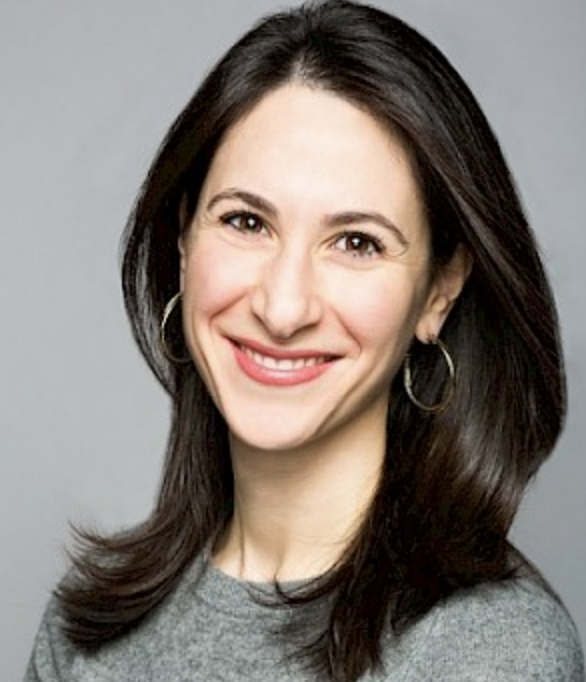
Dr. Rachel Nazarian is a board-certified dermatologist at Schweiger Dermatology, who has spent years practicing various aspects of dermatology, including cosmetic treatments, skin cancer, general dermatology, and dermatologic surgery.Dr. Nazarian has written many published articles in medical journals as well as widely respected dermatology textbooks, such as Treatment of Skin Disease.
Dr. Nazarian serves as a faculty member at Mount Sinai Medical Center’s Department of Dermatology, where she completed her dermatology residency. While completing her medical degree at Tulane University School of Medicine, Dr. Nazarian was awarded a grant from the Women’s Dermatology Society. Dr. Nazarian is a board certified dermatologist and Fellow of the American Academy of Dermatology.
Get exclusive access to fashion and beauty trends, hot-off-the-press celebrity news, and more.
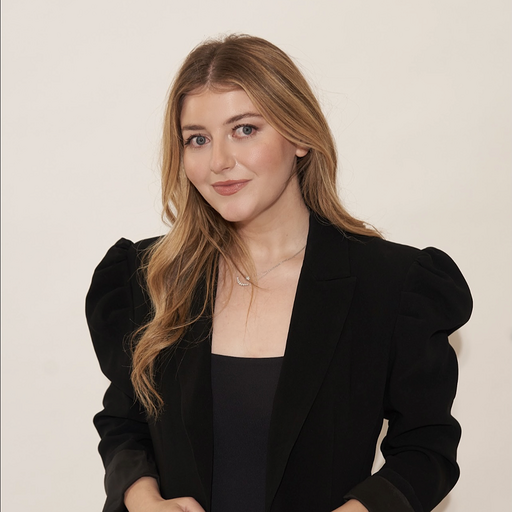
Samantha Holender is the Senior Beauty Editor at Marie Claire, where she reports on the best new launches, dives into the science behind skincare, and shares the breakdown on the latest and greatest trends in the beauty space. She's studied up on every ingredient you'll find on INCI list and is constantly in search of the world's glowiest makeup products. She's constantly tracking the biggest nail and hair trends to pop up in the beauty space, going backstage during fashion weeks, tracking celebrity looks, and constantly talking to celebrity hair stylists, nail artists, and makeup artists. Prior to joining the team, she worked as Us Weekly’s Beauty and Style Editor, where she stayed on the pulse of pop culture and broke down celebrity beauty routines, hair transformations, and red carpet looks. Her words have also appeared on Popsugar, Makeup.com, Skincare.com, Delish.com, and Philadelphia Wedding. Samantha also serves as a board member for the American Society of Magazine Editors (ASME). She first joined the organization in 2018, when she worked as an editorial intern at Food Network Magazine and Pioneer Woman Magazine. Samantha has a degree in Journalism and Mass Communications from The George Washington University’s School of Media and Public Affairs. While at GWU, she was a founding member of the school’s HerCampus chapter and served as its President for four years. When she’s not deep in the beauty closet or swatching eyeshadows, you can find her obsessing over Real Housewives and all things Bravo. Keep up with her on Instagram @samholender.